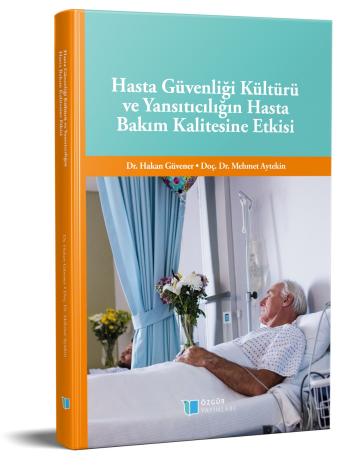
Hasta Güvenliği Kültürü ve Yansıtıcılığın Hasta Bakım Kalitesine Etkisi
İndir
Özet
Günümüzde sağlık kuruluşlarının hizmet verdiği çevresel koşullar, teknoloji, hastalıkların türleri, yayılma hızları ile beşerî, sosyal ve ekonomik etkileri, baş döndürücü bir hızla değişerek daha karmaşık ve daha belirsiz bir hal almaktadır. Bu değişim ve belirsizlik hali, geçmiştekilerden daha hızlı ve etkileri daha yıkıcı olabilmektedir. Bu durum, sağlık kuruluşlarını çalışma koşullarını ve sistemlerini gözden geçirmeye, değişime ve yeniliğe zorlamaktadır. Sağlık kuruluşlarının gelişim ve adaptasyon çabaları arasında hasta güvenliği kültürü ve hasta bakım kalitesini sürekli geliştirmek, artık bir zorunluluk haline gelmiştir. Bu kitapta genel olarak hasta güvenliği kültürünün değişkenleri olan; takım iklimi, güvenlik iklimi, iş tatmini, stres algısı, yönetim algıları ve çalışma koşullarının hasta bakım kalitesi değişkenleri; bireylerarası kalite, teknik kalite, yönetsel kalite ve çevresel kalite düzeylerine etkisinde yansıtıcılık boyutunun aracılık rolünün olup olmadığının belirlenmesi amaçlanmıştır. Çalışmada hasta güvenliği kültürünün hasta bakım kalitesine ve yansıtıcılığa etkisi ile sağlık çalışanlarının demografik özelliklere göre hasta güvenliği kültürü, hasta bakım kalitesi ve yansıtıcılığa yönelik algılarının farklılık gösterip göstermediğinin belirlenmesi amaçlanmıştır. Araştırmaya Türkiye genelinde kamu ve özel sağlık kuruluşlarında görev yapan 718 sağlık çalışanı katılmıştır. Araştırma hipotezlerini test etmek amacıyla Hayes tarafından geliştirilen model 4 aracılık yöntemi kullanılmıştır. Araştırma sonucunda; hasta güvenliği kültürünün hasta bakım kalitesini ve yansıtıcılığı olumlu düzeyde etkilediği görülmüştür. Yansıtıcılık hasta bakım kalitesini etkilemektedir. Hasta güvenliği kültürünün hasta bakım kalitesine etkisinde yansıtıcılığın aracılık rolü tespit edilmiştir. Ayrıca sağlık çalışanlarının hasta güvenliği kültürü, hasta bakım kalitesi ve yansıtıcılık algı düzeylerinde cinsiyet, coğrafi bölge, çalışma sektörü, meslek, çalışılan pozisyon ve mesleki kıdem değişkenlerine göre istatistiksel olarak anlamlı farklılıklar olduğu görülmüştür.

